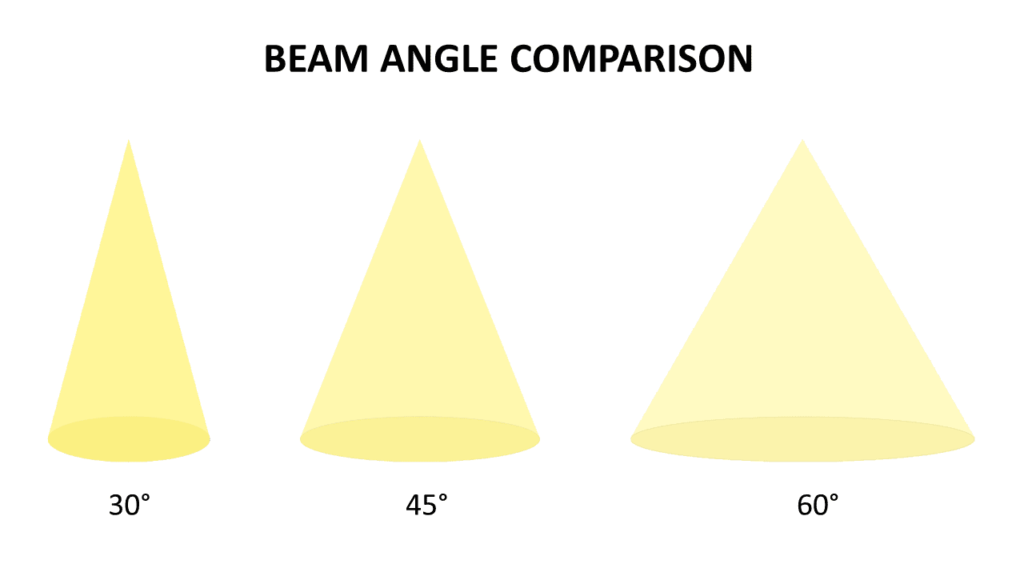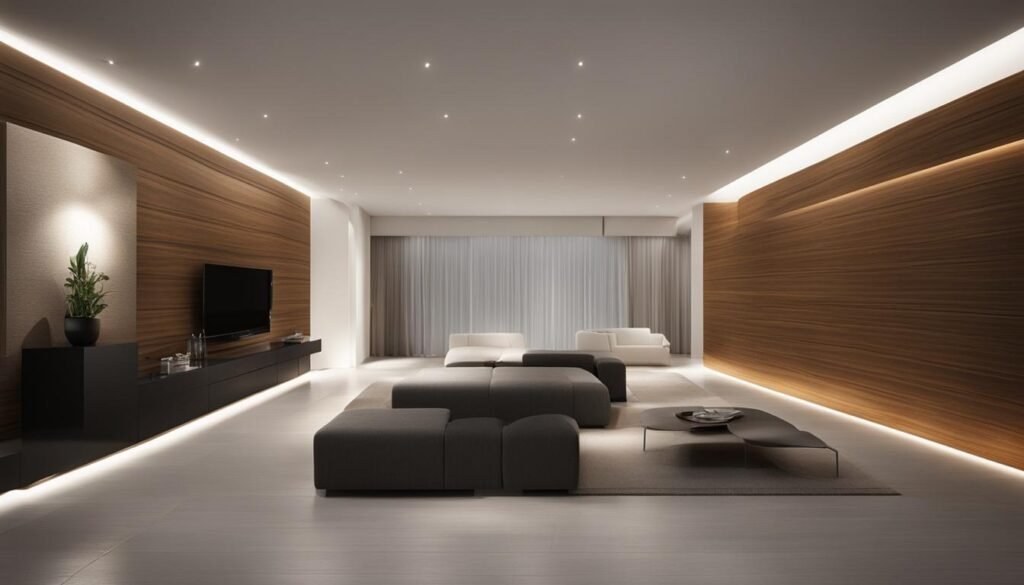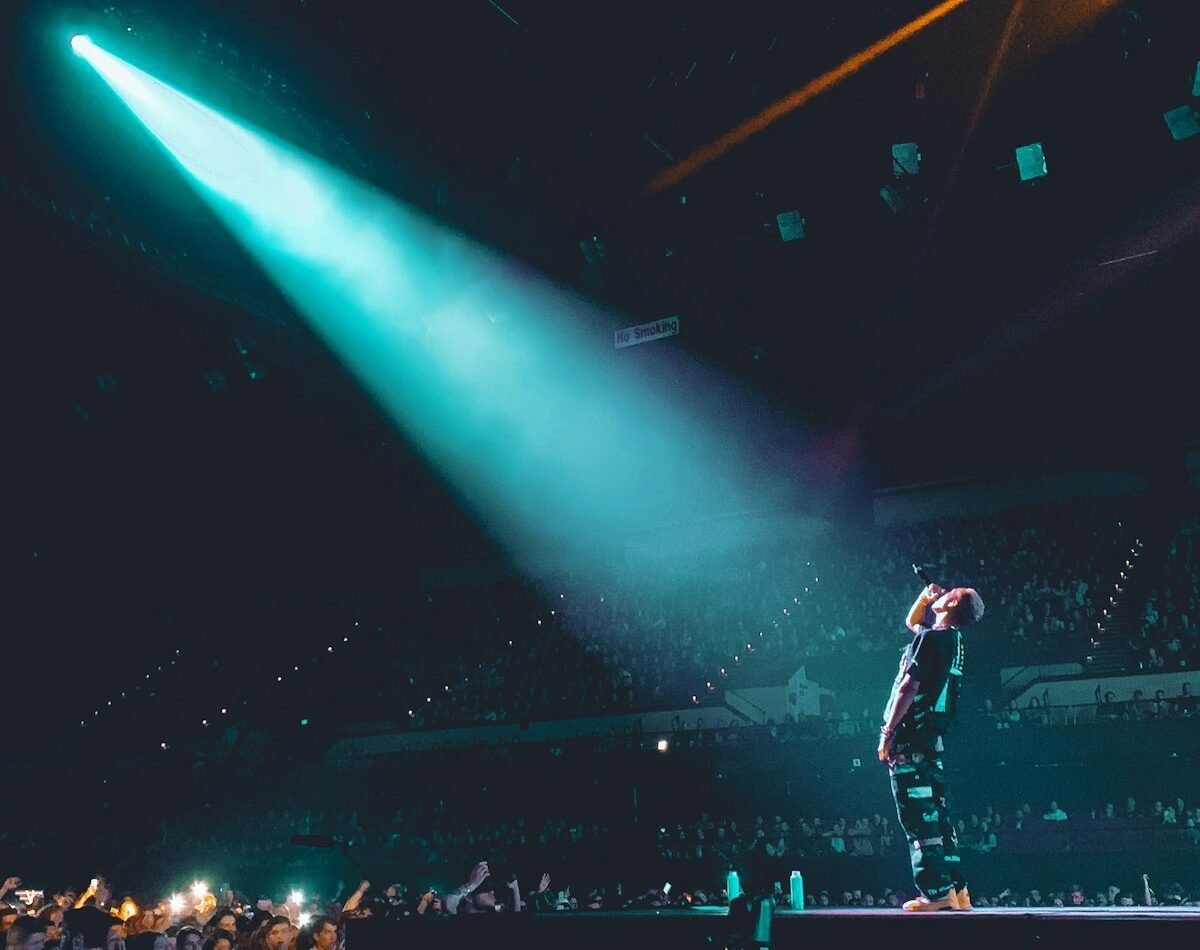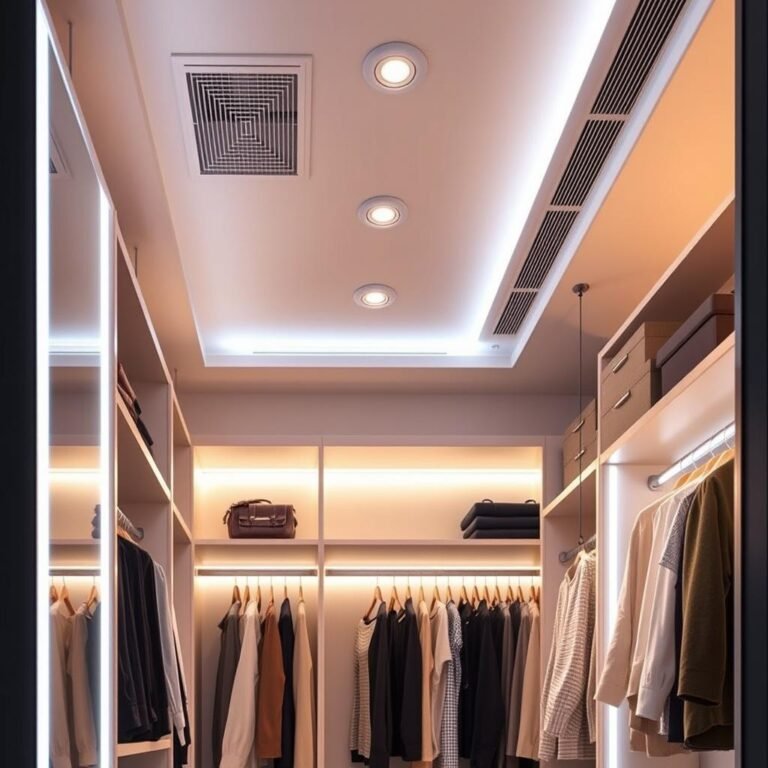Beam angle plays a crucial role in lighting design as it determines the spread of light from a source, such as a light bulb. Understanding this concept is essential for achieving the desired light coverage and ambiance in a space.
A wider angle results in more spread-out light, but with lower intensity. On the other hand, a narrower one concentrates the light in a smaller area with higher intensity. It is measured in degrees and can be categorized into different types, such as narrow, medium, and wide.
In lighting work, the beam angle calculation depends on various factors, including room size, light fixture type, and ceiling height. To measure light intensity, lumens per square meter (lux) and lumens per square foot (foot candles) are used. The total lumens required to light up a room vary based on the type of light and the size of the room.

The NEMA classification provides a standard for beam angles, with different degrees and corresponding descriptions.
Key Takeaways:
- Beam angle determines the spread of light from a source.
- Wider beam angles result in more spread-out light, while narrower angles concentrate the light in a smaller area.
- The angle selection depends on room size, light fixture type, and ceiling height.
- Lumens per square meter (lux) and lumens per square foot (foot candles) measure light intensity.
- The NEMA classification provides a standard for beam angles, with different degrees and corresponding descriptions.
Factors to Consider in Choosing the Right Beam Angle
When it comes to selecting the ideal light angle for your lighting needs, there are several factors that you should take into consideration. Whether you are lighting up a residential or commercial building, the type of structure plays a significant role in determining the appropriate angle.
For residential buildings, the focus is often on achieving uniform illumination on a room-by-room basis. In such cases, a wide-angle light placed in the center of each room is typically sufficient.
However, in commercial buildings like restaurants or factories, efficient lighting of large floor areas is crucial. In these scenarios, medium to narrow-angled lights spread over a widespread ceiling area are often preferred to ensure adequate coverage.
The choice of lighting fixtures also affects the light angle. Different types of light fixtures, such as hanging pendants or recessed lights, can alter the angle.
Hanging pendants tend to decrease the angle, while recessed light fixtures may increase it. Hence, it is essential to consider the type of fixture you will be using when selecting the appropriate light angle.
Additionally, the type of lighting you require will also influence the light angle selection. For ambient lighting, which provides a diffuse and overall illumination for an entire room, wider beam angles are typically suitable.

On the other hand, accent lighting that highlights specific areas or objects benefits from narrower angles.
Similarly, task lighting, which is focused and direct lighting designed for working areas, requires narrower angles to achieve optimum visibility.
Ceiling height is another critical factor when choosing the right light angle. Lower ceilings in residential buildings may need to have wider beam angles to ensure complete room coverage.
In contrast, higher ceilings in commercial or industrial buildings will require strong narrow angles and multiple light fixtures to ensure full area coverage.
Moreover, the type of bulbs used also influences the light angle. Various bulb types, such as type A bulbs or reflector casings like BR, PAR, and MR, have different beam angles. It is important to consider the specific characteristics of each bulb type to determine the most suitable light angle for your lighting needs.
By carefully considering these factors, you can ensure proper illumination and achieve the desired lighting effects in any space.
Comparison of Beam Angle Recommendations
| Building or Lighting Type | Ideal Beam Angle |
|---|---|
| Residential Buildings | Wide-angle light in the center of each room |
| Commercial Buildings | Medium to narrow-angled lights spread over a large ceiling area |
| Ambient Lighting | Wide angles for overall room illumination |
| Accent Lighting | Narrow angles to highlight specific areas or objects |
| Task Lighting | Narrow angles for focused and direct lighting |
Conclusion
The selection of the right angle in lighting design is crucial for achieving optimal lighting effects and functionality in a space. By understanding the concept of beam angles and considering factors like building type, light fixtures, lighting types, ceiling height, and bulb types, you can make informed decisions when choosing the appropriate light angle for your lighting needs.
Whether it’s a residential building that requires uniform illumination or a commercial building that focuses on efficient lighting of a large floor area, selecting the right angle helps to create the desired ambiance and functionality. It is important to remember that a combination of beam angles can be used to achieve the ideal lighting environment.
Seeking expert advice from lighting consultants or suppliers can assist you in making the best choices for your specific requirements. With a wide range of lighting solutions available, you can find the perfect light angle and lighting fixtures to transform your spaces into well-lit and aesthetically pleasing environments.
FAQ
What is beam angle in lighting design?
This angle is a crucial metric in lighting design as it determines the spread of light from a source, such as a light bulb. A wider light angle results in more spread-out light, but with lower intensity, while a narrower light angle concentrates the light in a smaller area with higher intensity.
Why is beam angle important in lighting work?
Beam angle is important in lighting work as it helps achieve the desired light coverage and ambiance in a space. The calculation depends on factors like room size, light fixture type, and ceiling height.
How do I choose the right angle for my lighting needs?
When choosing the right beam angle for your lighting needs, consider factors such as the type of building (residential or commercial), light fixtures, lighting types (ambient, accent, or task), ceiling height, and bulb types. Seek expert advice from lighting consultants or suppliers for guidance.
What are the different types of lighting and their corresponding beam angle requirements?
Ambient lighting, which provides diffuse lighting for an entire room, typically requires wide beam angles. Accent lighting, which highlights specific areas or objects, benefits from narrower angles. Task lighting, which provides focused and direct lighting for working areas, also requires narrower angles.
How does ceiling height affect the selection of the light beam angle?
Lower ceilings in residential buildings may require wider beam angles for complete room coverage, while higher ceilings in commercial or industrial buildings may need strong narrow beam angles and multiple light fixtures for full area coverage.
Do different bulb types have varying beam angles?
Yes, different bulb types, such as type A bulbs or reflector casings like BR, PAR, and MR, have varying beam angles. Consider the bulb type when selecting the appropriate light beam angle for your lighting needs.




